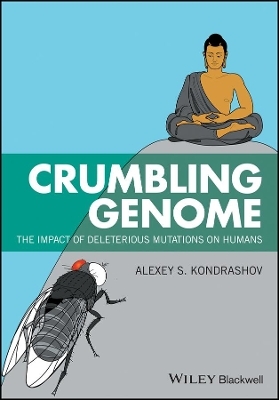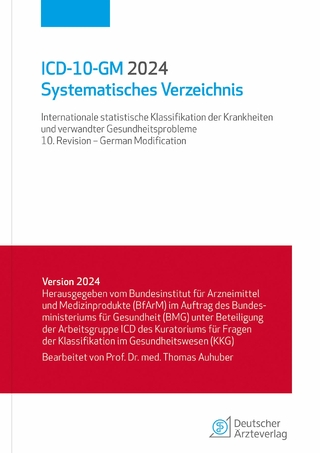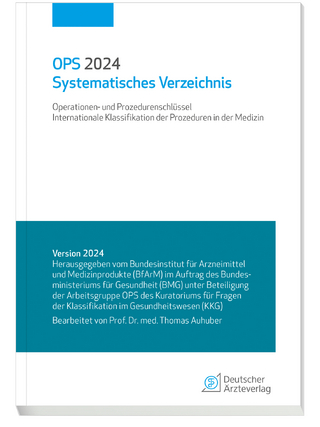
Crumbling Genome
Wiley-Blackwell (Verlag)
978-1-118-95211-5 (ISBN)
Despite all of the elaborate mechanisms that a cell employs to handle its DNA with the utmost care, a newborn human carries about 100 new mutations, originated in their parents, about 10 of which are deleterious. A mutation replacing just one of the more than three billion nucleotides in the human genome may lead to synthesis of a dysfunctional protein, and this can be inconsistent with life or cause a tragic disease. Several percent of even young people suffer from diseases that are caused, exclusively or primarily, by pre]existing and new mutations in their genomes, including both a wide variety of genetically simple Mendelian diseases and diverse complex diseases such as birth anomalies, diabetes, and schizophrenia. Milder, but still substantial, negative effects of mutations are even more pervasive. As of now, we possess no means of reducing the rate at which mutations appear spontaneously. However, the recent flood of genomic data made possible by next-generation methods of DNA sequencing, enabled scientists to explore the impacts of deleterious mutations on humans with previously unattainable precision and begin to develop approaches to managing them.
Written by a leading researcher in the field of evolutionary genetics, Crumbling Genome reviews the current state of knowledge about deleterious mutations and their effects on humans for those in the biological sciences and medicine, as well as for readers with only a general scientific literacy and an interest in human genetics.
Provides an extensive introduction to the fundamentals of evolutionary genetics with an emphasis on mutation and selection
Discusses the effects of pre-existing and new mutations on human genotypes and phenotypes
Provides a comprehensive review of the current state of knowledge in the field and considers crucial unsolved problems
Explores key ethical, scientific, and social issues likely to become relevant in the near future as the modification of human germline genotypes becomes technically feasible
Crumbling Genome is must-reading for students and professionals in human genetics, genomics, bioinformatics, evolutionary biology, and biological anthropology. It is certain to have great appeal among all those with an interest in the links between genetics and evolution and how they are likely to influence the future of human health, medicine, and society.
Alexey S. Kondrashov, PhD is Professor of Ecology and Evolutionary Biology at the University of Michigan, Ann Arbor. His research interests include evolution of sex and genetic recombination, properties of spontaneous deleterious mutations and of selection against them, and dynamics of genetic variation in natural and artificial populations.
Preface ix
1 Genotypes and Phenotypes 1
1.1 DNA is a Text 1
1.2 Genomes Small and Large 6
1.3 Genes and Intergenic Regions 7
1.4 Cells, Mitosis, and Meiosis 14
1.5 From Genotype to Phenotype 17
Further Reading 21
2 Mendelian Inheritance and Population Genetics 23
2.1 Inheritance is Discrete 23
2.2 Populations are Genetically Variable 27
2.3 Loci and Genes 33
2.4 Effects of Alleles on Phenotypes 37
2.5 Mendelian Traits and Diseases 43
Further Reading 46
3 Complex Traits and Their Inheritance 49
3.1 Complex Inheritance of Phenotypes 49
3.2 Properties of a Complex Trait 52
3.3 Complex Traits in Populations 55
3.4 Effects of Heredity and Environment on Complex Traits 60
3.5 Polymorphic Loci Behind Complex Variation 64
Further Reading 68
4 Unavoidable Mutation 71
4.1 Phenomenon of Mutation 71
4.2 Kinds of Mutations 73
4.3 Spontaneous Mutation 75
4.4 Evolution of Mutation Rates 77
4.5 Artificial Mutagenesis and Antimutagenesis 79
Further Reading 81
5 Struggle for Fidelity 83
5.1 Fidelity of DNA Replication 83
5.2 Cleaning Up After the Replisome 88
5.3 Dealing with DNA Damages 91
5.4 Harms of Broken Maintenance 96
5.5 Mechanisms of Mutation 100
Further Reading 104
6 Mutation Rates 107
6.1 Measuring Mutation Rates 107
6.2 Data on Mutation Rates 109
6.3 Guilty Older Men 112
6.4 Rates of Phenotypically Drastic Mutations 114
6.5 Mild Mutations and Mutational Pressures 118
Further Reading 121
7 Natural Selection 123
7.1 Vulnerable Adaptations and Their Evolutionary Origin 123
7.2 Two Basic Characteristics of Selection 127
7.3 Measuring Natural Selection 129
7.4 Selection at a Polymorphic Locus 132
7.5 Selection on a Quantitative Trait 135
Further Reading 138
8 Functioning DNA and Junk DNA 141
8.1 Selective Neutrality and Random Drift 141
8.2 Effective Population Size 144
8.3 Junk DNA Provides the Simplest Evidence for Evolution 144
8.4 Finding Functioning Genome Segments 145
8.5 The Genomic Rate of Deleterious Mutations 147
Further Reading 148
9 It Takes All the Running You Can Do 149
9.1 Middle Class Neighborhood for Drosophila 149
9.2 Selection Against Deleterious Alleles 153
9.3 Mutation–Selection Equilibrium 155
9.4 Inbreeding Depression 158
9.5 Dangerous Slightly Deleterious Alleles 160
Further Reading 162
10 Phenomenon of Imperfection 165
10.1 Phenotypic and Genotypic Imperfection 165
10.2 Five Evolutionary Causes of Imperfection 168
10.3 Weakly Perfect Human Genotypes and Phenotypes 171
10.4 Native, Novel, and Optimal Environments 173
10.5 Factors, Exacerbating Mutation Imperfection 175
Further Reading 176
11 Our Imperfect Fitness 177
11.1 Properties of an Allele 177
11.2 Human Derived Alleles 180
11.3 Average Imperfection of a Genotype 186
11.4 Variation Among Genotypes 190
11.5 Selection in Modern Human Populations 192
Further Reading 197
12 Our Imperfect Wellness 199
12.1 Qualitative Characteristics of Wellness 199
12.2 Quantitative Traits 206
12.3 Contributions of Heredity and Environment 208
12.4 Wellness‐impairing Alleles 211
12.5 Genetic Architecture of Wellness 215
Further Reading 217
13 Mutational Pressure on Our Species 219
13.1 Mutational Pressure on Diseases 219
13.2 Mutational Pressure on Quantitative Traits 225
13.3 Possible Increase of the Mutational Pressure 226
13.4 De Novo Mutations and Human Wellness 228
13.5 Optimistic and Pessimistic Scenarios 230
Further Reading 231
14 Ethical Issues 233
14.1 Lessons from History 233
14.2 Modern Practices 237
14.3 Humanist Ethics and the Main Concern 241
14.4 The Main Concern and Ethical Dilemmas 244
14.5 Role of Scientists 247
Further Reading 250
15 What to Do? 253
15.1 Conditionally Beneficial or Unconditionally Deleterious? 253
15.2 Mutationless Utopia: What Could It Be? 257
15.3 Mutationless Utopia: Is It Ever Going to Happen? 261
15.4 What Can I Do Without Germline Genotype Modification? 265
15.5 Prognosis 268
Further Reading 269
Index 271
| Erscheinungsdatum | 11.07.2017 |
|---|---|
| Verlagsort | Hoboken |
| Sprache | englisch |
| Maße | 165 x 239 mm |
| Gewicht | 249 g |
| Themenwelt | Informatik ► Weitere Themen ► Bioinformatik |
| Naturwissenschaften ► Biologie ► Genetik / Molekularbiologie | |
| Naturwissenschaften ► Biologie ► Ökologie / Naturschutz | |
| ISBN-10 | 1-118-95211-1 / 1118952111 |
| ISBN-13 | 978-1-118-95211-5 / 9781118952115 |
| Zustand | Neuware |
| Haben Sie eine Frage zum Produkt? |
aus dem Bereich


